NOW&AFTER’22
The 11th edition of the Now&After International Video Art Festival will be held from July 14 to August 15, 2022 at the Fabrika Center for Creative Industries.
Opening is on July 14 at 7 pm, 18 Perevedenovskiy pereulok.
18+
The theme of Now&After’22 is THE POSSIBLE AND THE IMPOSSIBLE.
"The only way to discover the limits of the possible is to go beyond them into the impossible."
Arthur C. Clarke, Technology and the Future
“We do not know the limits of the possible, but upon waking up one day, we may find ourselves across the Rubicon, in the impossible. And then suddenly it would turn out that we have not entered the beautiful future of flights to the stars and cities in oceans, but have fallen into the embodied dystopian nightmare of the great science-fiction writers. “Too much imagination is much rarer than too little,” Arthur C. Clarke notes in the same book. Lack of imagination cannot cope with envisioning the future and therefore often generates catastrophes in the present. For artists, this principle works the other way around, and a developed imagination gives them a glimpse into the present, the past, and the future. Video artists from different countries reveal new facets of the possible and the impossible in everyday and social life, in personal relationships and observations of non-human creatures living alongside us, in nature and in virtual reality, in memories and possible future.
Artists would like to change the world for the better with their work, whether they are looking at it through the eyes of a poet or explore the possibility of evil entering it. Alas, not everything is within their control; cruelty and violence remain companions of our lives, but as long as the portals from the possible to the impossible remain open to the imagination soaring towards the future, to kind feelings, love, and poetry, we will believe in the triumph of good.
Marina Fomenko, Now&After curator and director
Winners
1 place - Vivian Ostrovsky, Son Chant, USA, 2020, 12:00
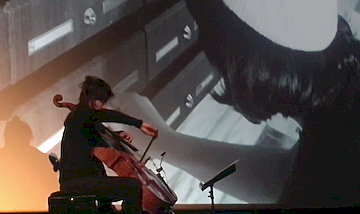
2 place - Luca Ferri, Si, Italy, 2020, 20:00
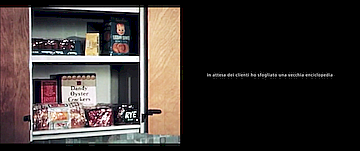
3 place - Paulius Sliaupa, The Monk, Lithuania, 2021, 12:15
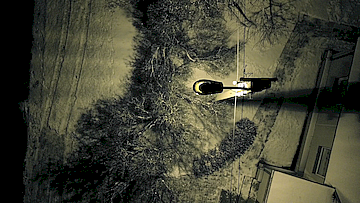
Special Jury Mention
Pierre Villemin, So small but big ideas in his head, France, 2022, 8:00

Mikhail Zheleznikov, The Inversion, Russia, 2021, 8:00
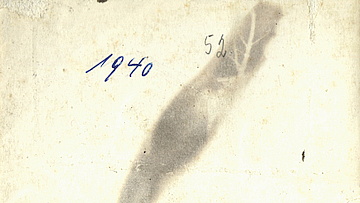
Participants
Competition program
-
Roi Group, Bread, Russia, 2021, 10:20

Love is life; it accommodates the possible and the impossible. In the Bread video we look at the dark side of love, which seems unfeasible to an inept mind but in reality turns out to be more than possible.
-
Adriana Barbosa, Fernanda Pessoa, Same/Different/Both/Neither, 2020, 19:00
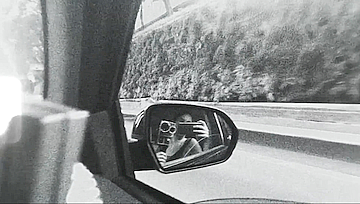
Fernanda is a Brazilian living in Sao Paulo, Adriana is a Mexican-Brazilian living in Los Angeles. In a period of isolation, far away from each other, they both reconnect through video-letters, inspired by the poetic gaze of female experimental filmmakers like Marie Menken, Joyce Wieland, Gunvor Nelson, and Yvonne Rainer.
-
Qunyuan Wang, Contrapunctus I, Germany, 2021, 4:00
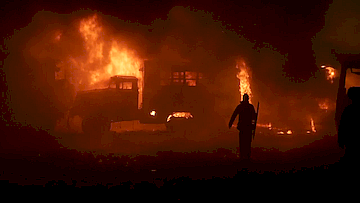
Artist Qunyuan Wang created this work by collecting video footage. The materials include surveillance videos, amateur street photography videos, and documentaries. The whole work uses an unconventional mode to show the process of violent evolution. From street violence to war, why human beings are so keen on violence?
-
Pierre Villemin, So small but big ideas in his head, France, 2022, 8:00

“Portrait of the being who has been accompanying me for a few months, coupled with a reflection on the state of the world...”
-
Ian Gibbins, Isolation Procedures, Australia, 2020, 6:22
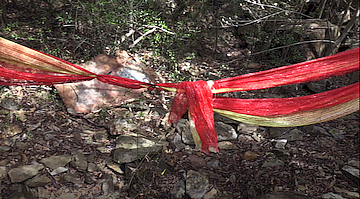
“WE ARE CLOSED UNTIL FURTHER NOTICE... MAINTAIN YOUR SOCIAL ISOLATION...” After the pandemic has passed, the lockdowns persist: perhaps this is the new normal...
-
Eta Dahlia, Ashen Glow, UK, 2022, 10:00
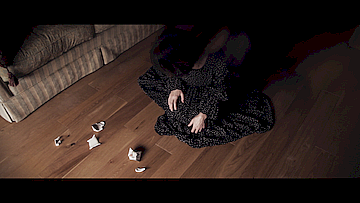
A bilingual haibun that explores the obscure attributes of an ever-fleeting protagonist. The videopoem blends minimalist poetry with inquisitive prose and juxtaposes them with the different visual tempo. Can you tell who the protagonist is?
-
Mikhail Zheleznikov, The Inversion, Russia, 2021, 8:00

Looking at a photograph bought in an antique store. The more one looks, the more one sees, but the true meaning of the picture keeps evading.
-
Lilia Li-Mi-Yan, Katerina Sadovsky, A000000000001000AA011, Russia, 2021, 9:00

The project consists of three video clips with CGI graphics and 3D. There are six screens presenting different characters that are no longer just people, but people of the future (posthuman). Using CGI graphics and 3D, the characters in the videos are equipped with special implants and an additional organ system that allows them to survive in their contemporary world, where there have been many ecological disasters, powerful CO2 emissions into the atmosphere have led to global warming, viruses have destroyed the normal biological organism and forced it to adapt to new conditions. 3D organs move and pulsate with humans, reacting to their emotional and physical state.
-
Lucía Malandro, Daniel D. Saucedo, Example #35, Cuba, 2022, 6:00
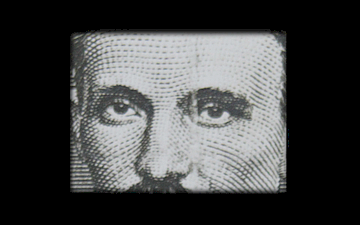
The images stored in Cuba's judicial archives contain the island's most jealously guarded secret: an alternative history in which the nonconformists, the misfits and the dissidents are also part of it.
-
Ilya Martynov, SOS, Russia, 2021, 4:14

The project is a hybrid of mockumentary and classical science art and manifests a new direction — mockumedia art. The video is based on the speculative decoding of birds’ body language and translating it into human language. The movement patterns of sparrows and tits recorded on a zoo live cam were used as input data for the study. By analyzing repeating motions using the Remove.bg AI, 28 postures were selected. Each pose was assigned an individual sound and a symbol corresponding to the characters of Khmer script, which belongs to the tonal languages group. The tone of the letters corresponds to a signal system modeled after Morse code. The project sheds light on a contradictory dialectic: how can humans ever sympathize with non-humans unless we start developing new languages?
-
Vivian Ostrovsky, Son Chant, USA, 2020, 12:00

“Going through my mini DVs shot over the past decade, I rediscovered a forgotten night sequence of Chantal Akerman and Sonia Wieder-Atherton leaving a brasserie where we had dined together in Montparnasse. The excerpt stayed with me for a while. This prompted me to focus on Chantal’s sound work in her films and her very close collaboration with cellist Sonia Wieder-Atherton, with whom she made more than 20 films.”
-
Lisi Prada, Winged (six readings), Spain, 2021, 14:31
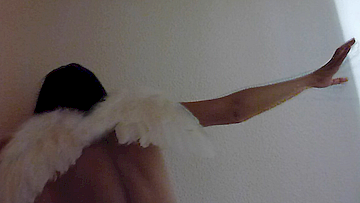
“Who has never dreamed of becoming a bird, having wings, being able to fly? My shots with birds in different countries in 2010–2021 and some very brief performances try to express this desire and remind us that human beings descend from them. Looking for a lyrical and rhythmic edition, the images are mounted on the sound piece Six Gazes, from the Obra Integral para Piano by Eduardo Perez Maseda and performed by Duncan Gifford. ” PIECES: 1. Bizarre · Seduction lessons. 2. Charme · Trying to fly. 3. Ossesivo · Learning to be a bird. 5. Fluente · Summer trill. 6. Fugace · Fugacious. 4. Capriccioso · A bird in the hand... [... is worth two in the bush].
-
Dante Rustav, The Invasion, Uzbekistan, 2020, 14:53
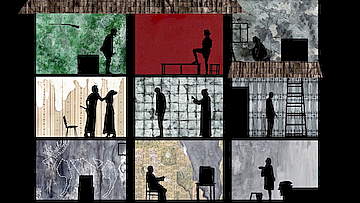
Each society has its own rhythm of life, which is set by time and by observing orderliness and traditions, but even the smallest intervention in this routine rhythm can change the society.
-
Hiroya Sakurai, The Stream XI, Japan, 2020, 7:50
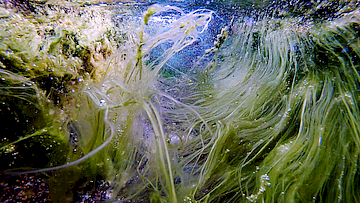
“In the man-made waterways of rice paddies, the water in nature must follow artificial rules. In that way, nature is made abstract, giving rise to a new form of beauty distinct from the natural state. The theme of this work is the liveliness of water as it follows the man-made course. In episode 11 of The Stream, I consider why water streams are created. Water flowing through waterways is necessary for the cultivation of crops. Agricultural products are mainly produced for human consumption and are sold and distributed in the marketplace, where crops are cultivated again with the profits earned. It is the economy and the distribution of goods that create the flow of water, which circulates in society through transportation and information networks.”
-
Paulius Sliaupa, The Monk, Lithuania, 2021, 12:15

The monk evokes, in a poetic way, man’s changing relationship with nature, the consequences this has on people’s daily life and the feeling of loss and alienation this causes on a personal level.
-
Luca Ferri, Si, Italy, 2020, 20:00

A middle-aged man in his living room is watching the creation of the cosmos through a gallery of encyclopedic images where the human being is never present, except for some of his works, ruins or activities. He falls asleep, lulled by the vision of an advertisement that features a woman, and finds himself in an awful nightmare where he witnesses the hunting of some polar bears by arctic hunters. All the while, two pieces of contemporary music by the composer Dario Agazzi and a text inspired by a childhood memory of the director related to a suicidal event, suggest us to “write once, erase twice.”
-
Virginia Eleuteri Serpieri, The Water's Tale, Italy, 2021, 7:00
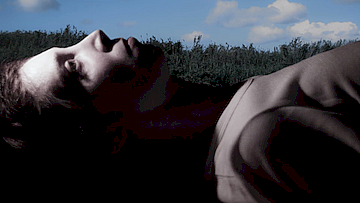
“Rome, 12 July 1998. My mother Teresa reaches Ponte Milvio Bridge, waits for dawn, and jumps into the river Tiber. From that moment, my city would no longer be the same for me. Today I have decided to lie on the river bed and hear the sound of the water. The child, in the belly of his mother, does not see but already hears the ‘murmur’ of water, as R. Murray Schafer reminds us in his book The Soundscape, ‘the ocean of our ancestors’ to which ‘it is tuned the ear of the fetus, in its turning into its own amniotic fluid.’”
Non-competition program
-
Cristina Amiran, Khalil Charif, Exponentials, Brazil, 2021, 3:47
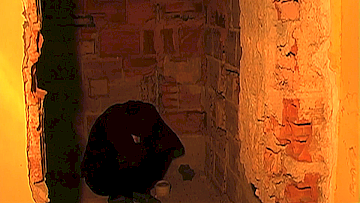
Through different languages, this experimental work uses sound and visual poetry, presenting images with a non-linear flow of words in a context of exponential equations, making integrated use of the word, the meaning of the word, and the sound of the word.
-
Debjit Bagchi, Home.MOV, India, 2020, 2:24
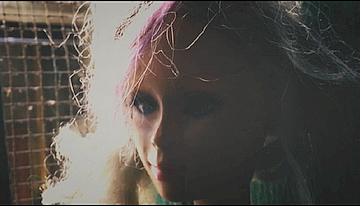
This experimental short film deals with the confession of an empty apartment when COVID-19 broke out in India.
-
Anna Butenko, Motherland, Russia, 2021, 5:47
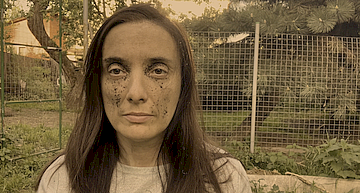
“The video was shot in the summer of 2021 in anticipation of the ideology slowly taking over the country becoming a threat to the love and connection to my homeland in Russia. In this video, I take handfuls of soil from the land near Moscow that my great-grandfather acquired as a first settler in the early 20th century, where all generations of my family have lived since then, and rub it into my body, face, and eyes to reconnect with my roots and the power of my ancestors, in an effort to go beyond the possible into a space of faith and hope.”
-
Anuj Malhotra, Turmoil, India, 2020, 3:00
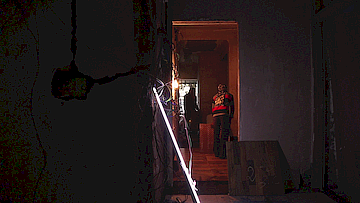
The film is a distillation of the present immensely volatile circumstances in India. It seems that the nation as a collective has crossed a certain threshold, and that no return is possible. In the middle of this, the filmmaker inquires the nature of his own engagement with the protests, especially in the context of the remarkable middle-class apathy in which individuals like him are reared, faced as he is, with a historical opportunity to participate.
-
Pablo-Martín Córdoba, Substance, Spain, 2021, 7:52
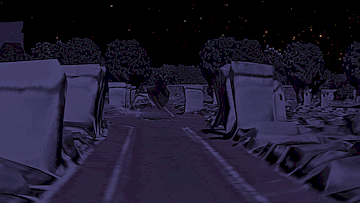
An elderly woman recounts the loss of a photograph that was particularly important to her. Her story is punctuated by diverted Aristotle’s phrases, which recall the irruption of the choir in the ancient tragedy. A dialogue is thus produced, at times enigmatic, which seems to put contemporary history in relation to that of the 20th century. The decor for this dialogue is aerial images of a virtual Paris, which nevertheless reveal very real Data Centers, hidden by an architecture that mimics them in the urban landscape. The register of words collides with the visual, projecting meaning onto our image technologies, and pointing out the idea of the “cloud” as a contemporary myth.
-
Anita Kremm, Ivangorod Report March 3, 2022, Estonia, 2022, 9:56
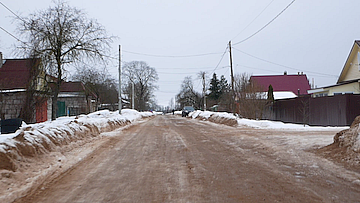
On March 3, 2022, I crossed the Estonian-Russian border in the Russian border town of Ivangorod and asked everyone I met if they would like to be on the other side.”
-
Danila Lipatov, Lap dogs, Germany, 2021, 8:00
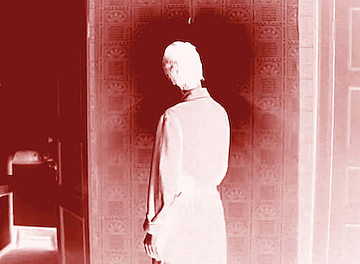
A reimagining of Fyodor Dostoyevsky’s vision of Russian nihilism through fragments from his novel Demons and scenes from Perestroika cinema, depicting physical and political apathy in domestic settings.
-
Stuart Pound, Lost Photons, UK, 2020, 4:14
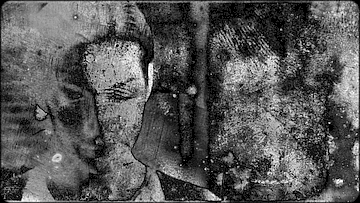
A clip from the iconic 1999 science fiction film The Matrix becomes a much older silent movie with piano accompaniment, seen again in its own far future or where time no longer counts. The two lovers shift roles and even genders in the obscure cinematic space that contains them.
-
Kamen Stoyanov, I am going to kill you, Austria, 2019, 3:00
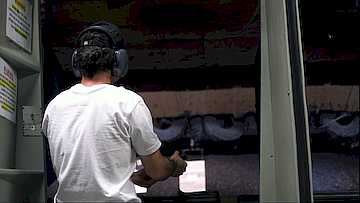
Is it possible to kill a threat? In the beginning of the video, the artist goes back and forth in an abandoned parking lot in Los Angeles. This represents movement from the present to the past and then back to the present. The artist: “Five years ago, I went to this abandoned parking lot at West Olympic Boulevard in Beverly Hills. I found this sheet of paper in the guard cabin. I thought it was scary, but interesting. I took it, although I did not know what to do with it. Now I know what to do with it.” In the second part of the video, the artist literally tries to shoot, to kill the message on the sheet: “I am going to kill you.”
-
Laura Focarazzo, Uncertain Territory, Argentina, 2019, 3:36

“Each demarcation involves establishing what it defines itself and what exceeds it. Uncertain Territory allows us to reflect about the manner in which we relate to nature. Hunter and prey, how can we know who is the captive? My own field recordings have been re-elaborated by the sound artist Simon Whetham for the construction of the soundtrack.”
-
Amy Hendrickse, D Mabuya, Mother’s Milk, South Africa, 2021, 4:50
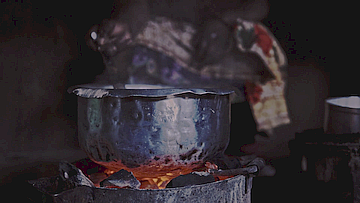
Narrated by and featuring original spoken word from D_BYTHELETTER, Mother’s Milk is one page of a moving, survivor’s journal of Truth and a salute to the cultural alchemy of Xhosa women. A mother’s frustrating contentment, a Grandmother’s ingrained rage and a daughter’s celebration of her Power of Will.
-
Tanya Sushenkova, Katya Refenstahl, Diana Galimzyanova, I Hope Not, 2020, 2:00
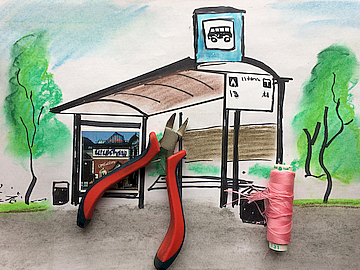
Short animated film by the art group Peredvizhnitsy; the heroine is played by Katushka Nitok. The film talks about undesirable advances from men that happen on the street. Based on real systemic events from our lives.
-
Yann Chapotel, Inside, Spain, 2021, 5:00
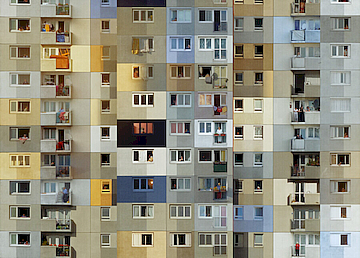
Inside unrolls a mosaic of windows, those of the building that I regularly filmed from my own window. Along this border where the interior opens onto the exterior, a multitude of moments of everyday life overlap and respond to each other, forming a choreographic fresco of simple gestures.
Jury
Thank you Now&After'22 respected Jury
-
Irina Gorlova, Head of the Contemporary Art Department at the State Tretyakov Gallery
-
Alina Fedorovich, Chief Collections Manager of the BREUS Foundation International Cultural Foundation
-
Asya Filippova, Director of the Fabrika Center for Creative Industries
|





































